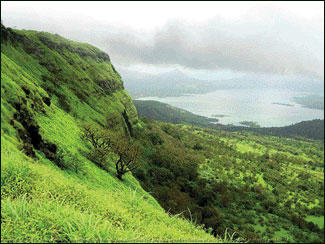
What are human rights?
Winner:
Every human is born with certain basic rights such as life, health,
freedom and protection against exploitation and crime. These rights are
not something granted by any individual or the government.They are
rights common to every human in this world. However, it is not uncommon
to find these rights being exploited especially those of victims of war,
prisoners, slaves, the poor and the illiterate people.

Human rights are often violated by individuals, the police, the
military and even by the governments of various countries.
The United Nations adopted the Universal Declaration of Human Rights
on December 10, 1948. It enumerates the basic human rights, namely the
right to free speech, freedom, judicial rights and the right to take
part in governance of their country. Further, human rights include the
right to live with dignity, the right to rest and recreation and the
right of equal pay for equal work.
One of the main problems faced in ensuring human rights is
enforcement. Different countries have adopted different standards and
different interpretations of these basic rights. The print and
electronic media play an important role in bringing human rights to the
fore by highlighting violations. Human rights should be protected by
everyone to ensure a better future for all citizens of a country.
Ammaarah Nilafdeen,
Grade 7,
Bishop’s College,
Colombo 3.
A visit to the planetarium
Winner:
The students of grades seven, eight and nine were taken on an
educational trip to the planetarium at Baudhaloka Mawatha in Colombo 7,
recently.
The planetarium building is a wonderful work of architecture in Sri
Lanka. When we entered the place a presentation was going on. We were
put through a security check before being allowed in. We were asked not
to take any photographs. They used a Universal Projector to show us the
constellations, planets, stars and so on.
There were students from other schools too who had come to see this
place.
At the beginning, the presenter showed us the directions by using an
arrow. Then the Sun was shown. It was like a blazing fireball. It is the
brightest object in the solar system. Then we were shown the planets,
dwarf planets, comets, meteorites and many more interesting objects in
the sky. The sky was filled with stars. The brightest star was Sirius.
The distance from the Earth to this star is 8.2 light years. The closest
star, Proxima Centauri, is 4.2 light years away.
Like humans, stars too have births and deaths. The stars are born in
nebulas. At present, we can see the Nebula of the Orion where many stars
are born. This nebula is called the great Orion Nebula.
The Sun is also a type of a star. One day the Sun will also die. The
presenter showed us the constellations, which were very beautiful. These
constellations are formed by stars. We were also taught about the
galaxies. Our galaxy, the Milky Way is spiral in shape. But there are
different shapes of galaxies. They are spiral, oval and elliptical
shaped.
Finally, the presenter advised us to observe the night sky everyday
and try to identify the constellations and stars. So, everyone of us
should observe the night sky with or without a telescope and make it a
practice in our life. We can learn many things by doing so.
We learnt a lot by visiting the planetarium. It was useful for our
science lessons too.
Abdullah Ibrahim,
Hejaaz International School,
Mt. Lavinia.
Sri Lanka
Winner:

The land of beauty
Special is the way the sun brings out the light.
Rivers that flow and waters that shine.
Island so small but, big at sight.
Land with no ending, of beauty at night.
All that surounds the land with all its might.
Never to give up but fight for the right.
Kindness and smiles that linger throughout.
All of which help Sri Lankans lead a happy life.
Rachael Gaye,
Grade 7A,
Methodist College, Colombo 3.
Protect Horton Plains
Winner:
Horton Plains is situated in the highlands of the Central Province,
32 km from Nuwara Eliya. This is the highest plateau in the country. It
is at a height of about
 2,300
metres. This was discovered by Sir Robert Horton. The park which is 3160
hectares was declared a national park in 1988. 2,300
metres. This was discovered by Sir Robert Horton. The park which is 3160
hectares was declared a national park in 1988.
Horton Plains is fed from both the north-east and south west monsoons
as well as intermonsoonal rains. It gets about 5,000 mm rainfall
annually. It is the most important catchment area of the country with
three major rivers starting from this area. They are the Kelani, Walawe
and the Mahaweli rivers.
The park is rich in biodiversity and consists of forests and
grasslands. A wide variety of endemic fauna and flora are found here.
Among the 24 species of mammals, elk, deer, giant squirrel, wild boar,
otter porcupine and leopard are considered special. The bird diversity
is also very high with 87 species of birds, including migratory birds.
Horton Plains is also famous for beautiful flowers. Nelli, Bovitiya,
Binara, Dwarf bamboo and some orchid species that grow here are endemic.
However, most of these endemic species are now extinct due to poaching
activity and the carelessness of visitors to this famous park.
There are many interesting attractions such as the Baker’s Falls,
Chimmini pool and the famous World’s End, which is a sheer drop of 3,700
feet that offers a fabulous view all the way out to the distant southern
coastline.
We must take necessary steps to protect this treasure for the future
generations. Do not pollute or destroy the fauna and flora at Horton
Plains.
Fathima Reshma Ismail,
Grade 8-B,
Sangamiththa Balika
Maha Vidyalaya,
Aluthgama.
The changing seasons...
Winner:
The environment we live in is formed by many different kinds of
climatic conditions. The climate of a country shows various evidence
from the geographical features and the flora and fauna . The changes in
the weather too depend on the climate. If the climate changes, the
environment too changes.

The climate of a country is balanced by the temperature and rainfall.
If temperature increases most of the organisms cannot survive.If the
rainfall also increases too much it can cause harm to the existence of
humans on the Earth. So, the people who live in this world must be ready
to experience any climatic condition in their life time.
There are mainly four types of seasons that have been identified.
They are summer, winter, autumn and spring. These seasons occur as a
result of the Earth’s revolution.
As Sri Lankans we who live in a tropical region are fortunate to
experience only the hot and wet seasons. But in areas like the Arctic
and Antarctic regions people experience only the Winter season
throughout the year. Some countries experience all seasons.
There are many features which can be identified in each of these
seasons. Winter is the coldest season which occurs in the months of
November to February. During this season the whole environment is
covered with snow. It looks like a marvellous white world. Many Winter
games and events are held. Most countries in the Northern hemisphere are
experiencing Winter now. Summer is a season where the temperature is
high, the trees are full of fruits, the grain fields are ready for
harvest and flowers are everywhere. During this season, the days are
longer than the nights. It is the opposite of the Winter times. When
Autumn arrives the environment looks like an arid zone. The trees are
bare with most of the leaves fallen.Out of all four seasons, spring is
the most beautiful season. During this season, the trees begin to sprout
and flowers also blossom .
The trees have new tender leaves. The temperature rises gradually
after the cold Winter. The birds sing songs and all organisms engage in
their normal day-to-day activities. Let’s protect the environment and
these four major seasons. These seasons are what makes our beautiful
world.
S.N.B.M. Hiruni Amasha Wijesooriya,
Grade 9,
Tholangamuwa Central College.
My favourite animals
My favourite animals are dogs, snakes and dinosaurs. I like to learn
a lot about these animals because I want to become a biologist. I also
like to learn about other pre-historic creatures, such as pre-historic
fish and birds. I also like to learn how they evolved into the creatures
we see today.
The reason I like dogs is because they learn quickly to do tricks. I
only like the beautiful skin, snakes have. However, I do not like snakes
in general because they are venomous or poisonous. I have three books on
dogs, a book on snakes and two books on pre-historic life. I am
impatient to grow up and become a biologist.
G.A. Cooray,
S. Thomas’ College, Mount Lavinia. |

